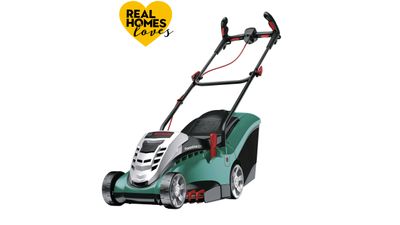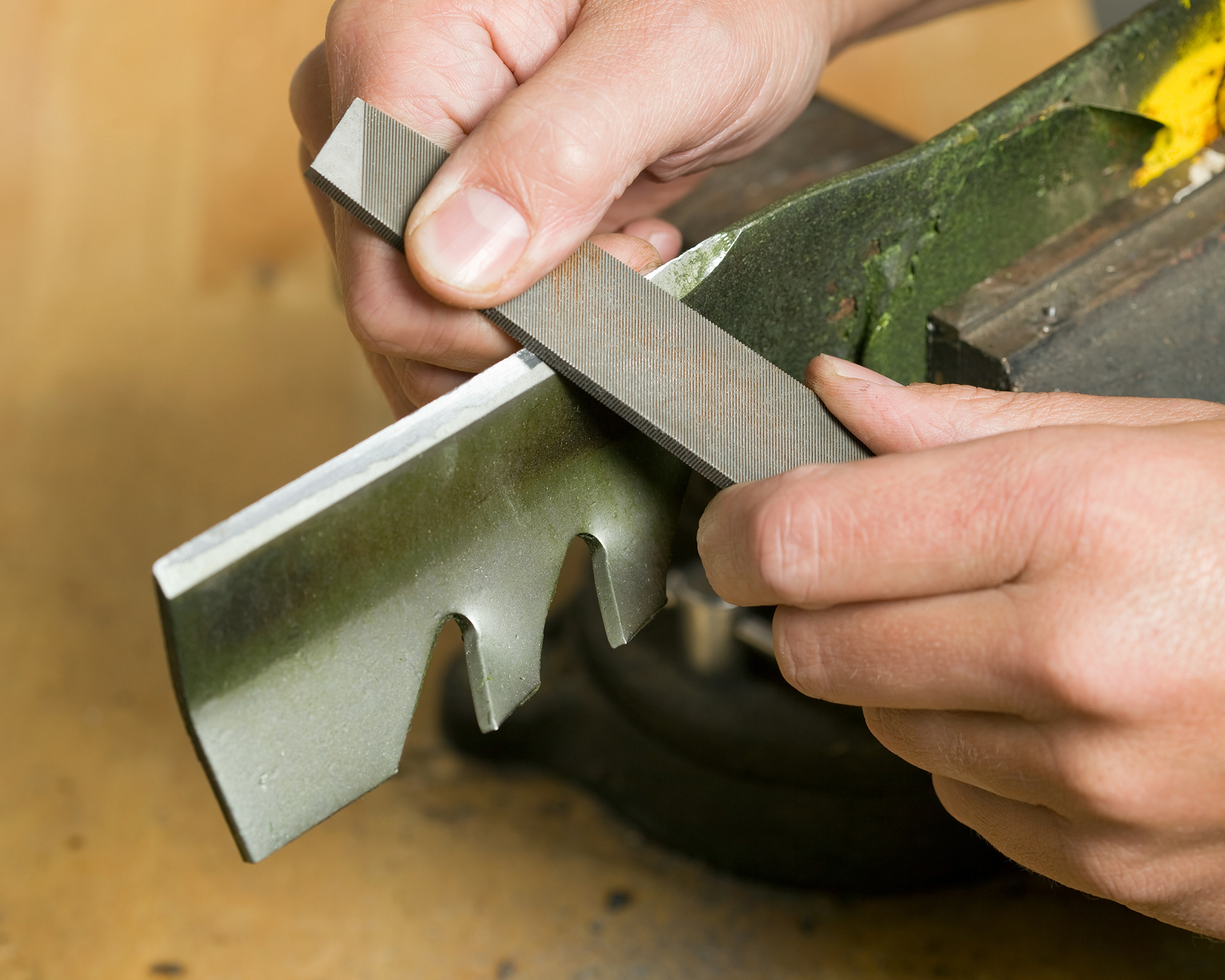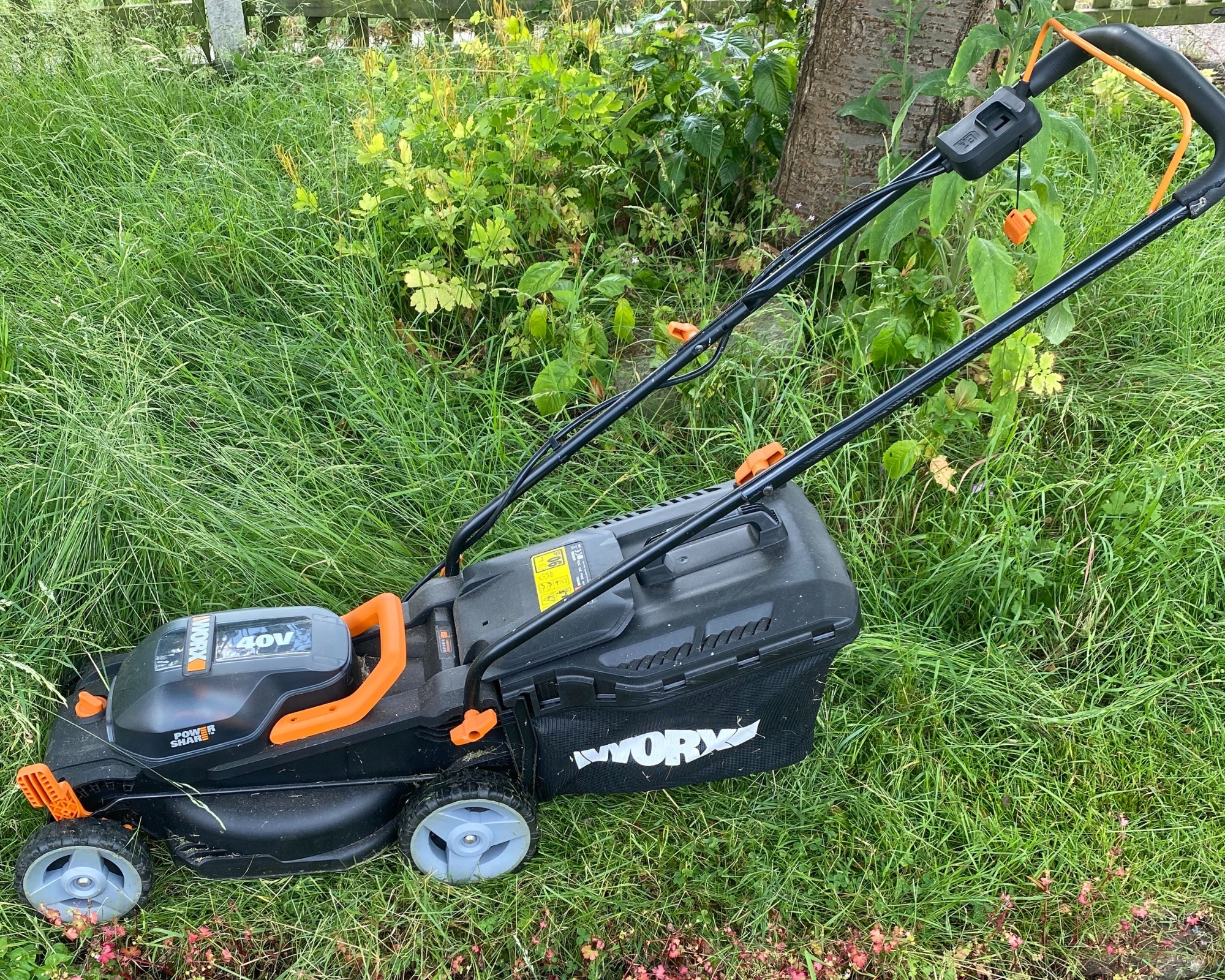The 12 lawn mowing mistakes that are thwarting your shot at a lush lawn
These lawn mowing mistakes can put a dampener on its looks and health. Pros reveal what to do instead


Christina Chrysostomou
Lawn mowing mistakes are so easy to stride into, and can bring big, visible and undesirable outcomes we don't want including patchy, unhealthy or dead grass.
Being forewarned about the pitfalls of mowing will be your lawn's best protective factor. Our experts weigh in on the 12 bloopers you're making when mowing, and detail how to avoid lackluster, weed-filled or scorched lawns.
Take this expert insight and transform it into learning how to mow your lawn like an absolute pro.
The 12 lawn mowing mistakes you're making
When getting your lawn summer ready, avoid these mishaps which, our lawn care expert, Carlos Ramos of TotalLawn, says you probably don't even know you're making.
Where our experts have recommended products, we've used our lawn care and backyard consumer knowledge to source highly-rated, high-quality products from trusted retailers.
All prices were correct at time of publication.
1. Using the wrong lawn mower
Using the incorrect lawn mower on your grass can be detrimental to its health, advises Carlos. He explains, "There are two kinds of lawn mower: rotary and cylinder. A rotary mower is the most common and is the best choice if you have lots of objects to navigate around, if your garden is uneven, or if your grass is long. It has a big spinning blade underneath a chassis, which creates a hoover-like effect, sucking the grass up before chopping the tops off."
Get small space home decor ideas, celeb inspiration, DIY tips and more, straight to your inbox!
The second option is a cylinder mower, which comes, surprise surprise, with a set of cylindrical-shaped blades and a roller in front, which Carlos says can be superior.
He explains, "The quality of the cut is generally much better, as the blades spin while chopping off the top of the grass, all while creating stripes on your lawn with the roller. They are the ideal option if you want a low mow, which is why they are the chosen mower for professional sports pitches and bowling greens, however, they are no good on uneven lawns or long grass."
Our guide on the best lawn mowers will help you decide if you're in the market for a new one. You can also learn how to level a yard before you get started on mowing it to ease the strain.

We rated this as our number one electic lawn mower and love that its cordless, features a huge 50 liter grass box and is great for medium-sized lawns, which will be more than enough for the majority of our small-space dwellers and regular readers. It also has efficient batteries that can run for between 30-60 minutes, which is enough time to complete the lawn mowing in one go. It also has ergonomic handles for comfort but we did note its battery is fiddly to remove and the mower is on the pricier side. The spend is worth it in our view as this big-ticket item is a long-term investment.
2. Running mower at half speed
Mowing your lawn shouldn't take forever, so if you've invested in a lawn mower, make sure you're using it to its full potential. The best small lawn mowers possess powerful credentials so there's no need to go at a snail's pace.
Carlos says, "Some people mistakenly believe that cutting at full speed damages the mower’s engine and shortens its life, but the truth is all mowers have been created with full speed for a reason so it’s best to use it."
3. Cutting with dull blades

Mowing your lawn with dull blades can kill grass and turn it yellow or brown.
Carlos explains, "It’s important to cut your lawn with sharp blades as dull blades have a tendency to pull up portions of grass rather than chop it at the desired height."
The ideal length to trim off of your grass in any one go will vary depending on how long it is to begin with, but the rule of thumb for healthy lawns is only cutting one third of its total height, according to Jeremy Yamaguchi, CEO of Lawn love.
Learn how to sharpen your lawn mower blades with our expert guide.
4. Mowing grass when it's wet
Cutting a wet lawn is a no-go for many reasons: not only can it speed up how quickly your mower blades go dull, but wet grass can tear when cut, which will result in a messy mow rather than crisp, clean, and sharp.
Carlos adds, "Wet grass tends to clog up your mower too, meaning the mower has to work harder and increases the amount of time you actually spend mowing and cleaning your machine."
Checking the weather before you get mowing will not only protect the grass, but keep you safe if mowing with an electric mower. Plus, nobody wants to be out there in the rain slipping and sliding whilst operating dangerous machinery.
It happens more than you think. Every year, there are more than 84,000 lawn mower injuries treated in emergency departments across the USA.
5. Not mowing regularly enough

In the summer, your grass will be growing overnight, and leaving it too long will mow will make it look unkempt, compromise the strength of your blades and making your grass unhealthy as it pumps energy into growing sees.
Trim yours once or twice a week to avoid your grass going to seed, Jeremy tells Real Homes.
Carlos adds, "Your grass will grow quicker in the summer, and it’s better to cut little and often than all at once."
6. Cutting grass too short
It's a fine balance though as cutting your grass too much will result in scalping, that can open the doors to excessive weed growth and fungal disease, turning your grass yellow.
Our summer lawn care guide is dedicated to the best tips for the warmer season's mowing musts.
Carlos says taking off more than one third of your lawn's height in a single mow will put the plant under unnecessary stress, making it discolor. He advises, "Remember to adjust your blade height as necessary, and if you have the desired height, it’s best to be patient. It may take a couple of mows to get there."
And, Chris Bonnett, founder of Gardening Express agrees, adding, 'You may think that you’re keeping your lawn nice and tidy by having short grass but actually it could be doing more harm than good. Shorter grass means less photosynthesis which means less growth. Ideally, you want to keep your grass around two to three inches long."
7. Mowing the same direction
Lawn mower lines outdoors are just about as satisfying to look at as crisp vacuum lines indoors on plush carpet.
But Carlos has some tips to avoid stressing the grass. He says, "Everyone wants that beautifully striped lawn, but varying your mowing pattern is good for your lawn over time as it means you’re not repeatedly forcing the grass to bend in one particular direction."
He advises alternating the side of the lawn from which you start your mowing every times, one week starting at the bottom of the yard, the other week at the top.
"This will make the stripes look slightly different, and result in stronger and more resilient grass over time," Carlos adds.
If you've got new patches of growth from when you seeded the lawn, avoid cutting it till it's at least three inches high Jeremy advises, as the first growth is much more vulnerable to being unearthed.
8. Failing to overlap lines when mowing
This one is for backyard aesthetics rather than lawn health but important nonetheless: failing to overlap lines when mowing will result in a messy lawn.
"When you are mowing in straight lines, overlap each pass of the lawn mower by a couple of inches," Carlos says. "This will create an even lawn. It's much better to overlap than to look back and see strips of grass you have missed."
9. Not cleaning your machinery
Cutting the grass is sweaty, physical work and the temptation when the job is done is to chuck your mower in your shed or to the side, and head indoors to cool off. But leaving your machinery full of clippings or dirtied up is a big no-no.
Carlos says, "The longer you leave it, the harder the grass clippings are to remove. A build-up of clippings will result in your mower overheating the next time you cut, which can cause it to break down."
It's an expensive mistake to make for something that will hopefully only take you a few minutes to sort before cracking on with the rest of your weekend.
10. Mowing too quickly
If you're a keen gardener or like being out in the sun, mowing your lawn might not be a arduous task. But if like my husband and I, you hate lawn maintenance, find it hurts your back or simply: you want to spend your weekend doing something else, it can be very tempting to rush through the job to be shot of it ASAP.
However, doing so can leave your lawn looking uneven, or with clumps of clippings knocking about, making it look untidy, rather than trimmed nicely.
Carlos says, "Although mowing can be quite a tedious job, especially if you’re doing it regularly, it can be tempting to rush."
Mowing your lawn should be a regular job in the summer months which will help mitigate the desire to rush or end up cutting it too short.
11. Mowing in extreme heat
If it's hot outside, down tools and let your sleeping lawnmower lie. Mowing your lawn in extreme heat or at the peak of the day can result in a brown lawn, as the length of grass helps shade the newer, more delicate growth underneath and exposing its fresh trim to the hottest hours or days can scorch it.
"During a heatwave, your lawn will be trying to gain access to water and therefore should not be mowed, instead mow the lawn prior to the heatwave and leave grass cuttings to help shelter the soil,' says Anna Hampshire, of Marshall's Gardens.
Instead, cut it on a cooler day, preferably mid-morning.
Anna adds, "Trimming your grass will signal it to grow which uses vital energy and water which obviously needs to be preserved in heat, so wait until the heatwave has passed."
12. Failing to clear debris

Failing to remove debris, be it natural items such as pine cones or man-made such as litter that's blown in or been left on your lawn will compromise your lawn mower, grass and potentially, you.
Large stones can flick up from the speed of the blades and smash windows, or hit you.
Jeremy told Real Homes clearing away seasonal waste (think pine cones, fallen fruit and twings or hard tree debris) is vital as leaving it behind to be mowed can clog up your machinery and even damage mowers.
If you're battling a brown lawn or you're not quite satisfied with your groundcover, there are loads of low-maintenance alternatives to grass that won't involve you dragging out your mower multiple times a week.
Decking designs, gravel and bark, and paving are just some of the possibilities to explore. Each of these will add texture and interest to your backyard, without the weekly upkeep.
However, dandelions and other unwanted foliage can still make their way through these decorative furnishings, so get yourself some weed control membrane (available on Amazon) and a bottle of the best weed killer to achieve clean-looking results.

Hi! I'm editor of Real Homes. I've been a senior journalist and editor for national magazines and newspapers for 16 years, specializing in consumer, real-life, and lifestyle articles. I have a BA in English Language and Communication, mentor journalists, and I’m also founding editor of Lacuna Voices, an independent digital platform. I love to cook, add character to my newly-built home, try my hand at DIY projects, keep my collection of plants alive, and make memories with my little family of three. For Real Homes, I specialize in articles on pest control, DIY, declutterring and cleaning, interviewing experts daily for their top tips and product recommendations.
- Christina ChrysostomouFormer acting head ecommerce editor